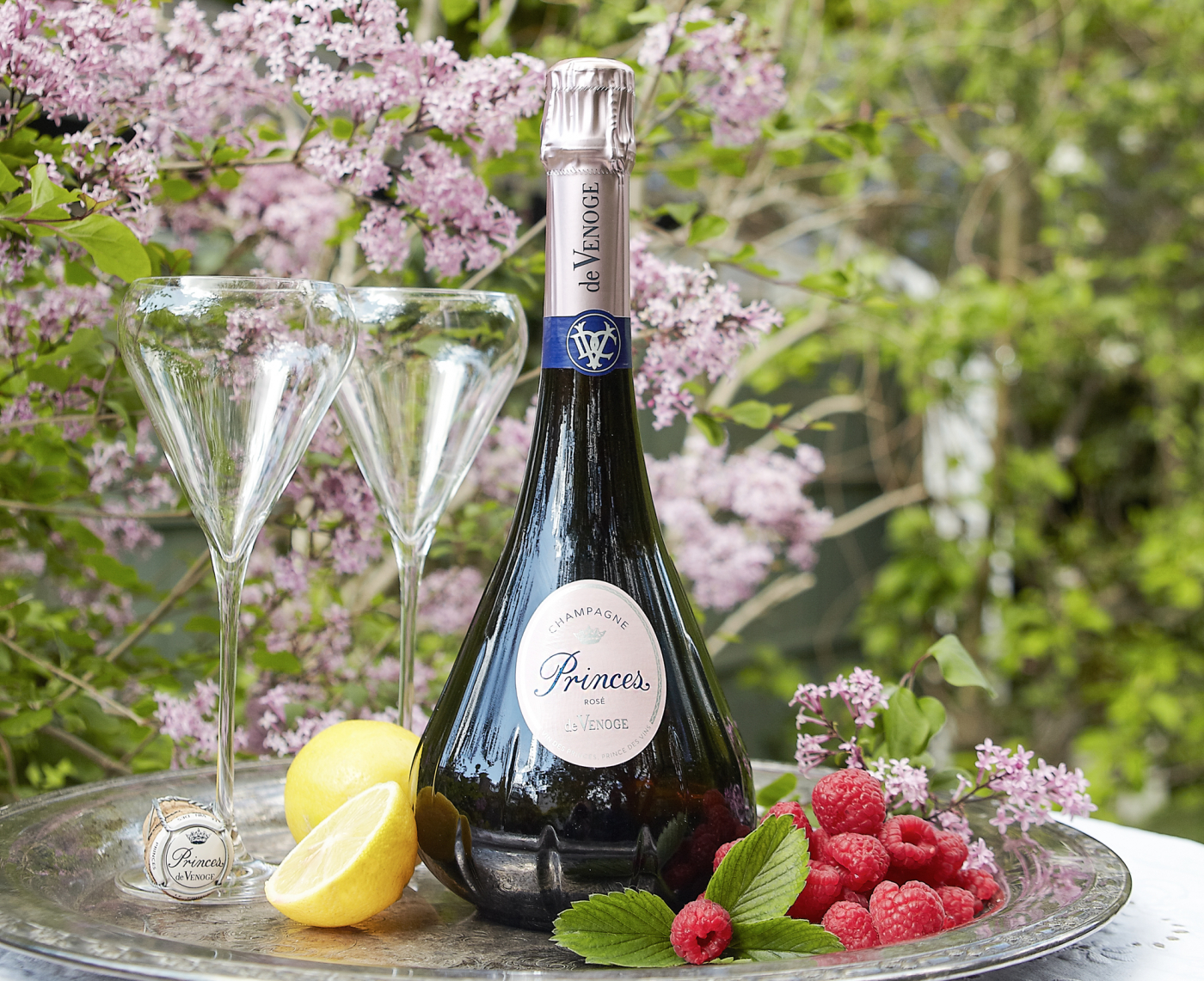
Effervesce sense | Karen Krizanovich on the best rosé champagnes
Rose, is a rose, is a rosé… Karen Krizanovich tastes the best of the best, from Taittinger to Champagne De Venoge Princes Rosé

Rose, is a rose, is a rosé… Karen Krizanovich tastes the best of the best, from Taittinger to Champagne De Venoge Princes Rosé

It’s the 1970s. What wine goes best on a round bed fitted with silk sheets on a fancy boat in the Mediterranean on Valentine’s Day? Rosé champagne of course. Rosé isn’t new, having been around since ancient times. But this combo of white and red grapes – famous as still wine in Provence as early as the sixth century – is perfect for a hazy summer. It’s gone beyond the 1990s ideas of the drink for bridal parties, coming out parties and dates where you like the other person more.
As I find my personal life now less amusing to write about, rosé has changed too. As if by magic, it is no longer the wine of romantic legal misery
According to Master of Wine Richard Bampfield, rosé champagne was taché or “stained”. In a 2016 interview with Alice Lascelles in the FT, he said, “In the court of Louis XIV most vineyards in Champagne were planted with black grapes, so if you made it the normal way the grapes got shaken up en route to the press, resulting in rosé rather than the white champagne the court wanted. It was essentially a sign of poor workmanship.” By 1764, Ruinart was selling rosé champagne on purpose, and so the trend found footing. Years later, It was my drink of choice while waiting for the lawyer to send me upsetting letters on a Friday – they always arrive on a Friday designed to ruin the weekend – until the decree nisi. As I find my personal life now less amusing to write about, rosé has changed too. As if by magic, it is no longer the wine of romantic legal misery.
These days, many champagne aficionados prefer rosé champagne because, for one, it takes a different set of skills to make. Rosé champagnes can develop surprising notes that go with game, or seafood or croissants in the morning. That’s the second reason: rosé is like us. It likes food. Having had meals of blanc de blancs and bruts, you best believe when it comes to drinking throughout a meal, rosé is welcome, particularly from a grower or established house – see my column on the rightfully famous Billecart-Salmon. Rosé’s got red wine in it, innit, so it can have adaptive flavours, given a chance.
I had tried it a few times, but the highlight was when I shared it with Princess Märtha Louise of Norway on a super yacht in Monaco
So rosé is less cracklin’ rosie and more varietal, more nuance and resonant flavours – which is where these babies come in. Pink champagne, you want? Something special? How about one in a genie’s bottle? For sheer oomph, the 100% pinot noir Champagne De Venoge Princes Rosé takes the cake. Serge Ngoie runs The Champagne Guru, a champagne platform that is not your ordinary wine-buying landing pad. Typically romping around in Monaco with celebrities, captains of industry and royalty, Serge is one of those people who makes it all look easy. His take on the Princes Rosé? “…this is a beautiful champagne with notes of strawberry, raspberry, gooseberry and pomegranate, paired with citrus aromas that make this Champagne a true wonder to enjoy during the aperitif, with lobster or salmon,” he adds, “I had tried it a few times, but the highlight was when I shared it with Princess Märtha Louise of Norway on a super yacht in Monaco.” Serge wouldn’t give any old suds to a Norwegian princess.
What I liked about Princes Rosé was refinement: columns of persistent bubbles, a freshness on the nose and a swirling essence of red fruits immediately on the buds. This is exotic, one that will bewitch, bother and bedazzle. (Not vajazzle.) The decanter-shaped bottle looks fantastic on the table, the wine romantic in the glass and the taste is a love affair on the palate. Selected for me by Australia’s The Champagne Crusade Nicky Goodyer, she always sources The Champagne Guru for her UK deliveries. You too can get a bottle from Serge himself at the same place. (Australian availability is from The Wine Collective.)
As long as we’re talking beautiful bottles, the sheer luminous pink of Taittinger Prestige Rosé is a visual siren. It’s Taittinger so you know it’s going to be consistent and tight. Blended with 15% of still red wine, its pedigree includes the best pinot noirs from Montagne de Reims and Les Riceys. That’s where the mesmeric shades of sunset/sunrise come from – a colour that makes you want to stare at it all day. Make no mistake: this is a refined wine. It doesn’t demand too much and it speaks in low notes of forest fruits, soft, delicate succulent flavours. It’s not sweet, stretches out on the tongue and then veers off into dry that echoes the first fruit. The helping of chardonnay (30%) gives it versatility. So, for instance, you could plan to serve Taittinger Prestige Rosé for any kind of dinner, burn that dinner and order pizza instead – and you wouldn’t have to change the wine at all. This is a perfect choice for before dinner, during dinner or instead of dinner. C